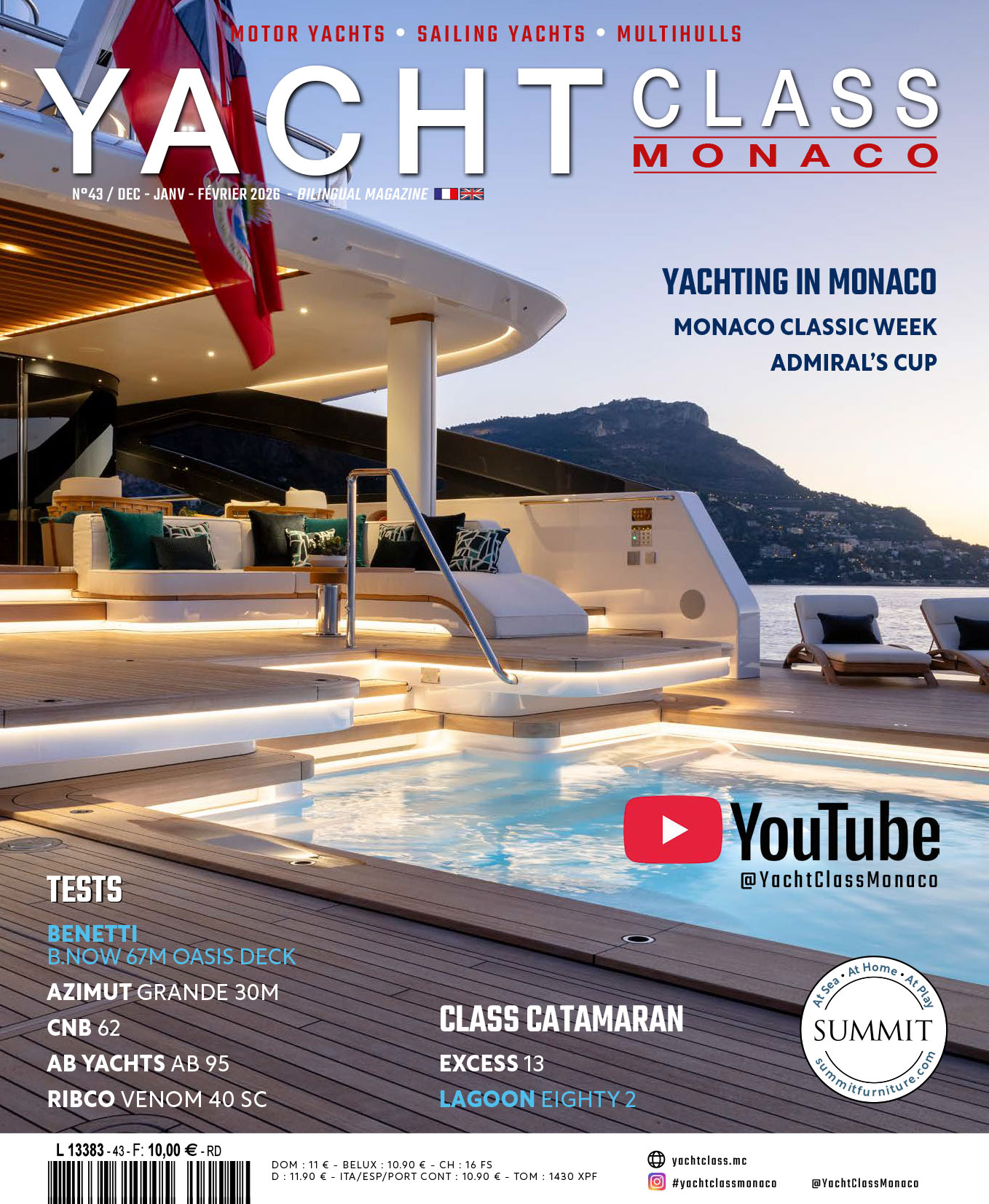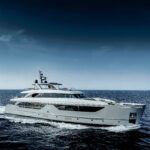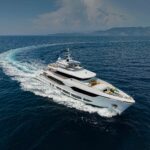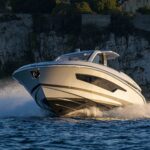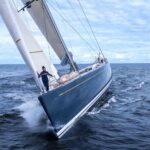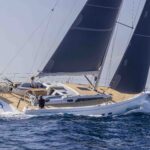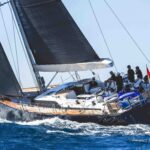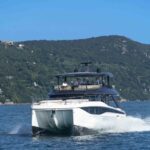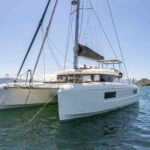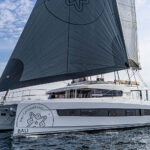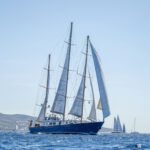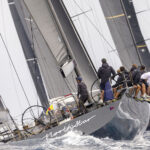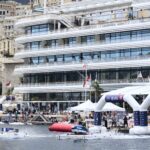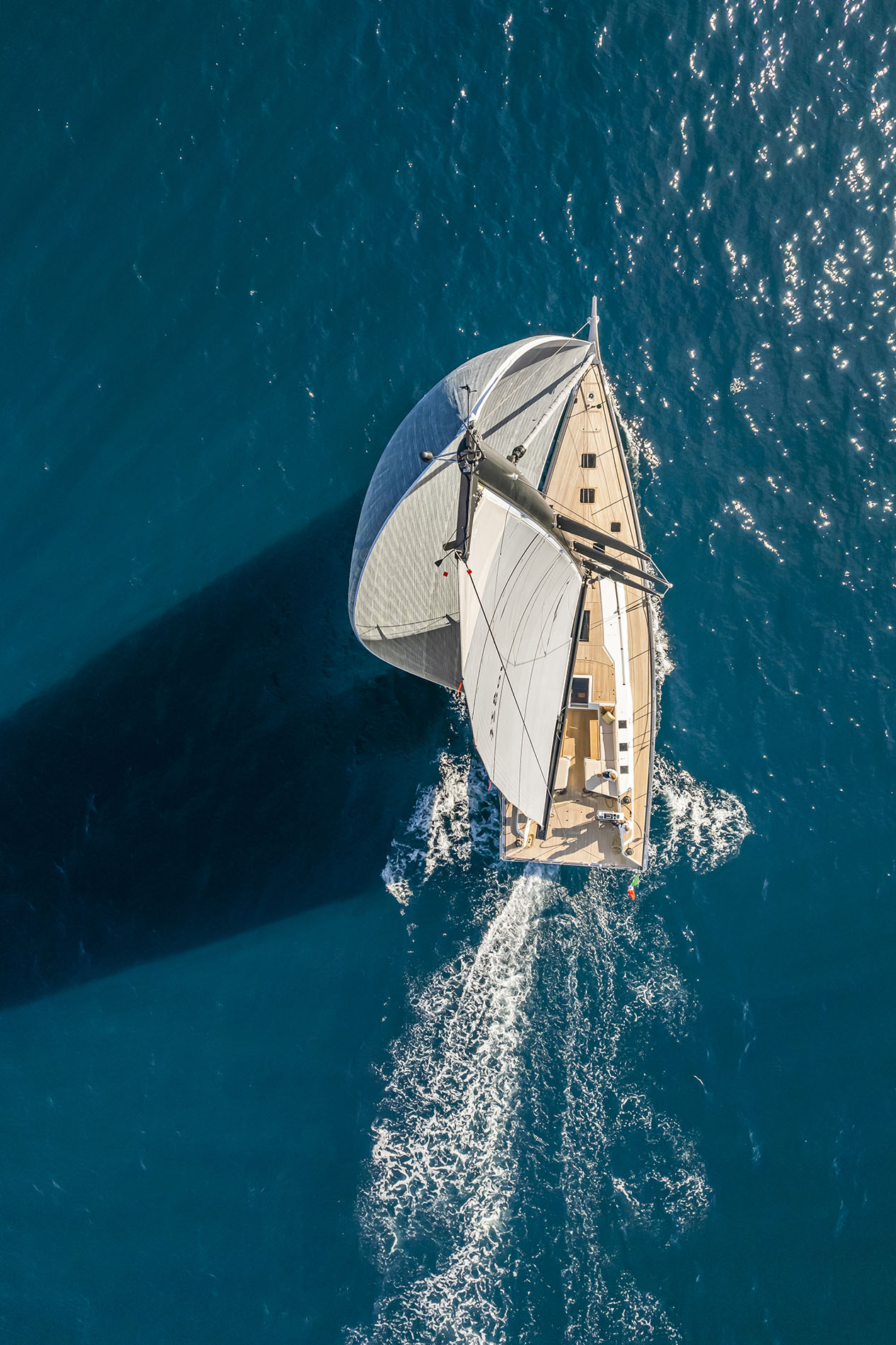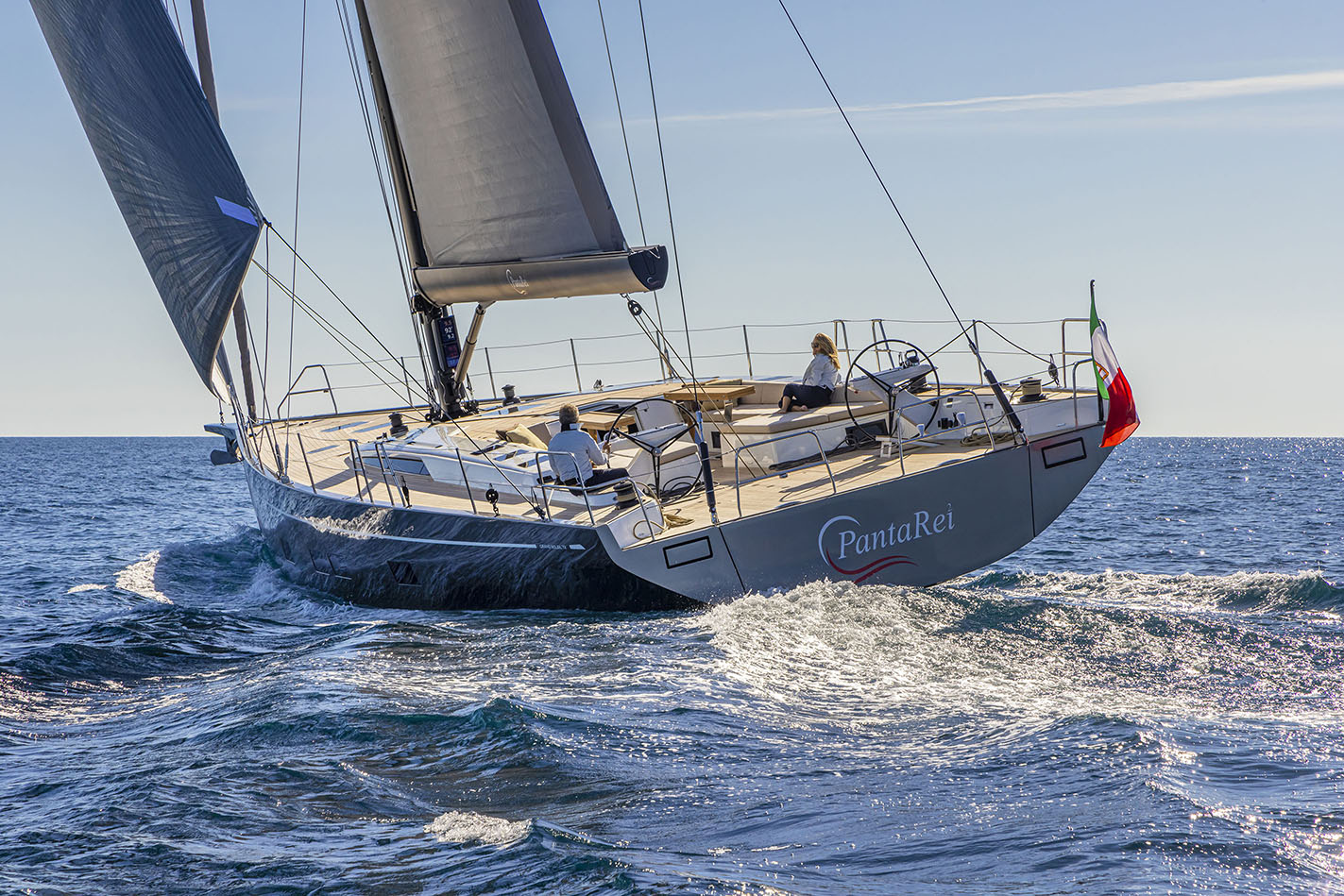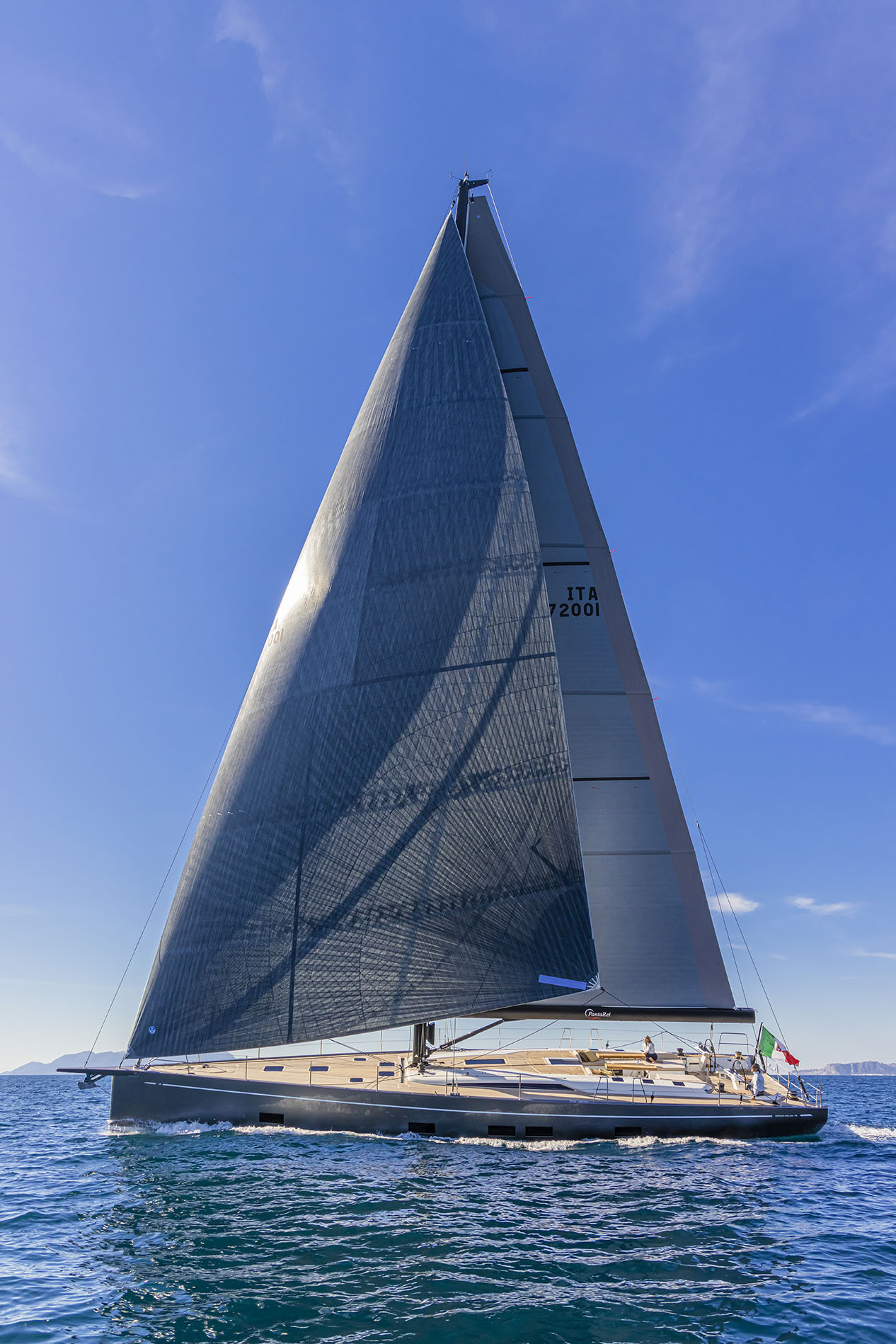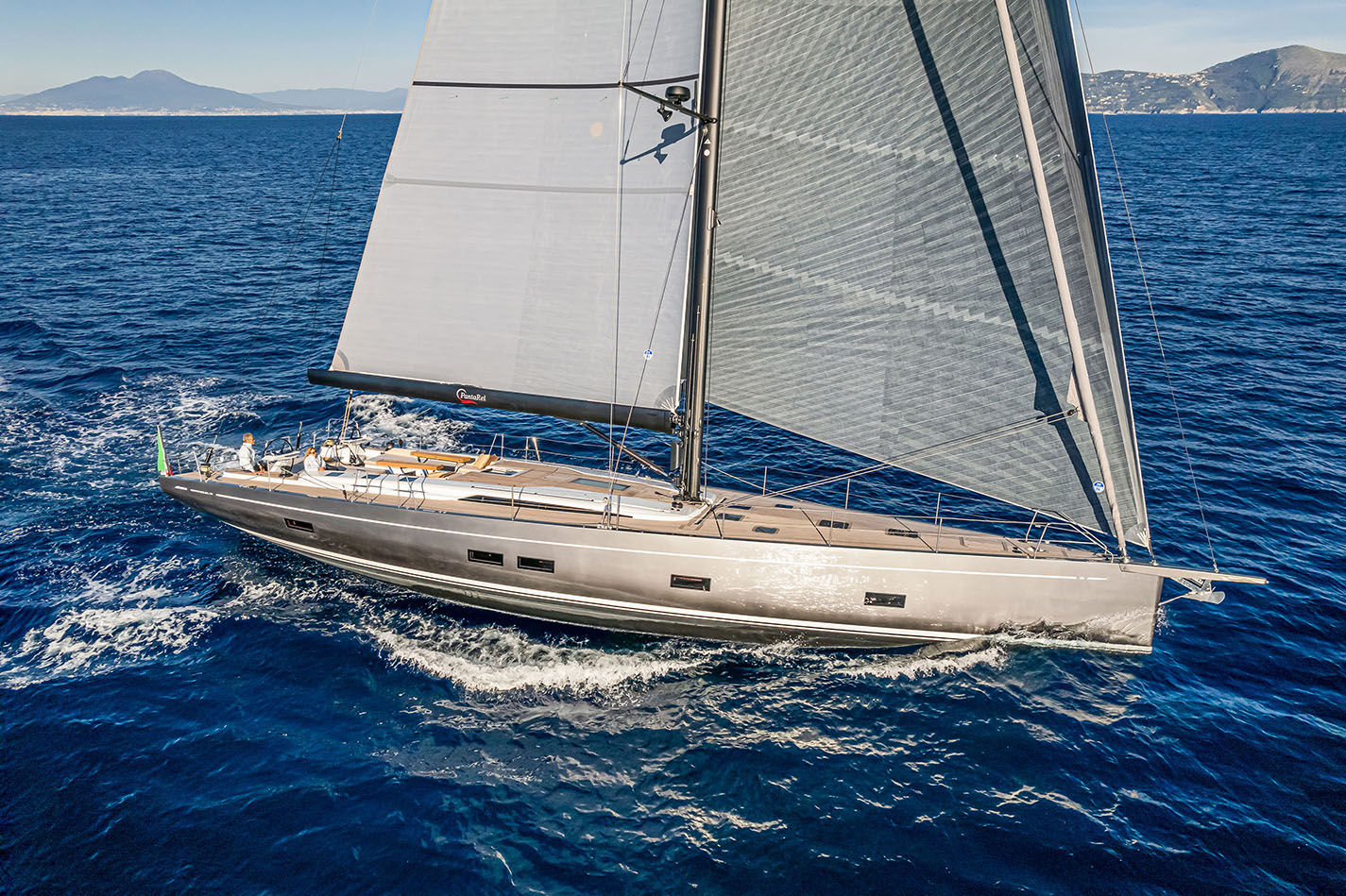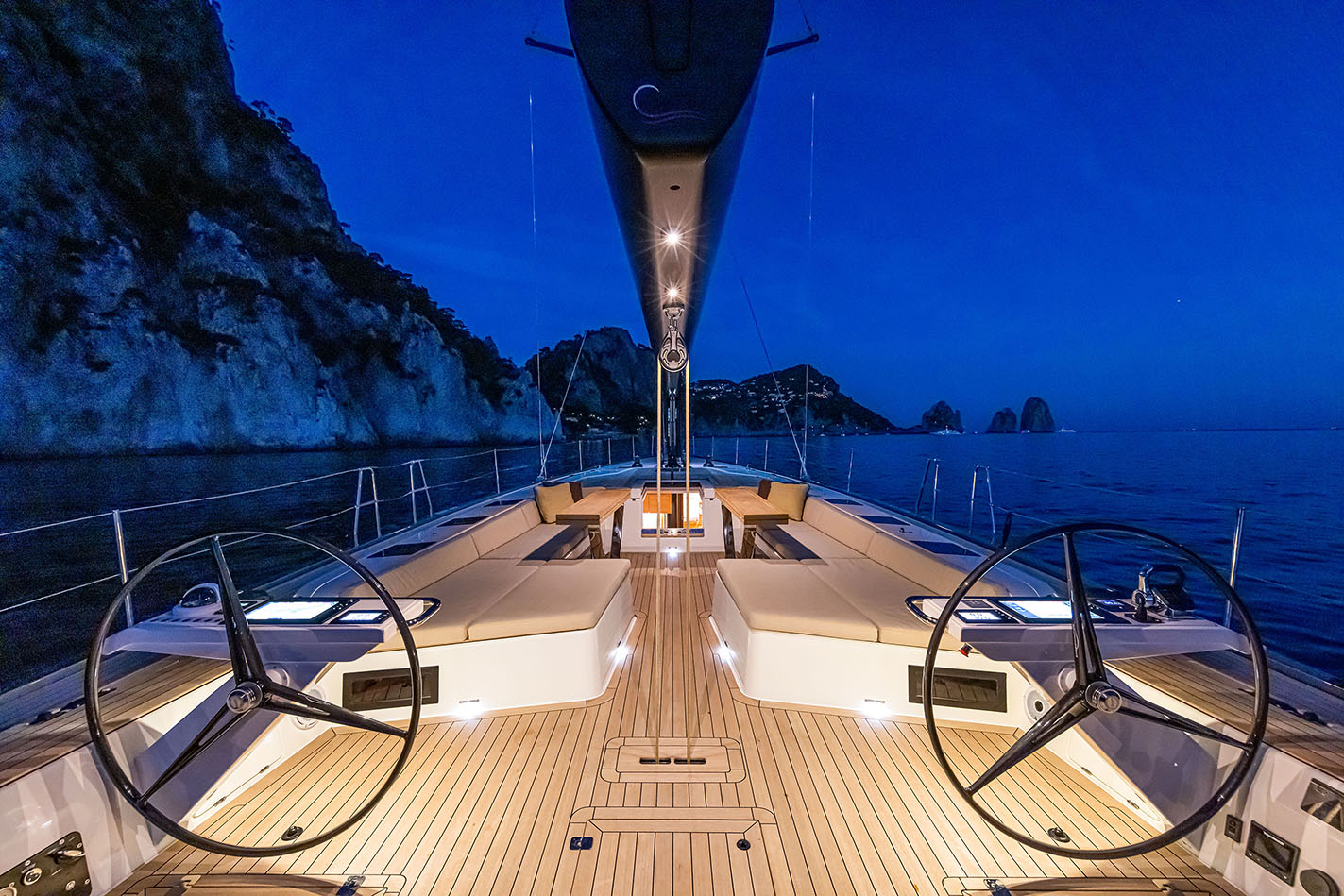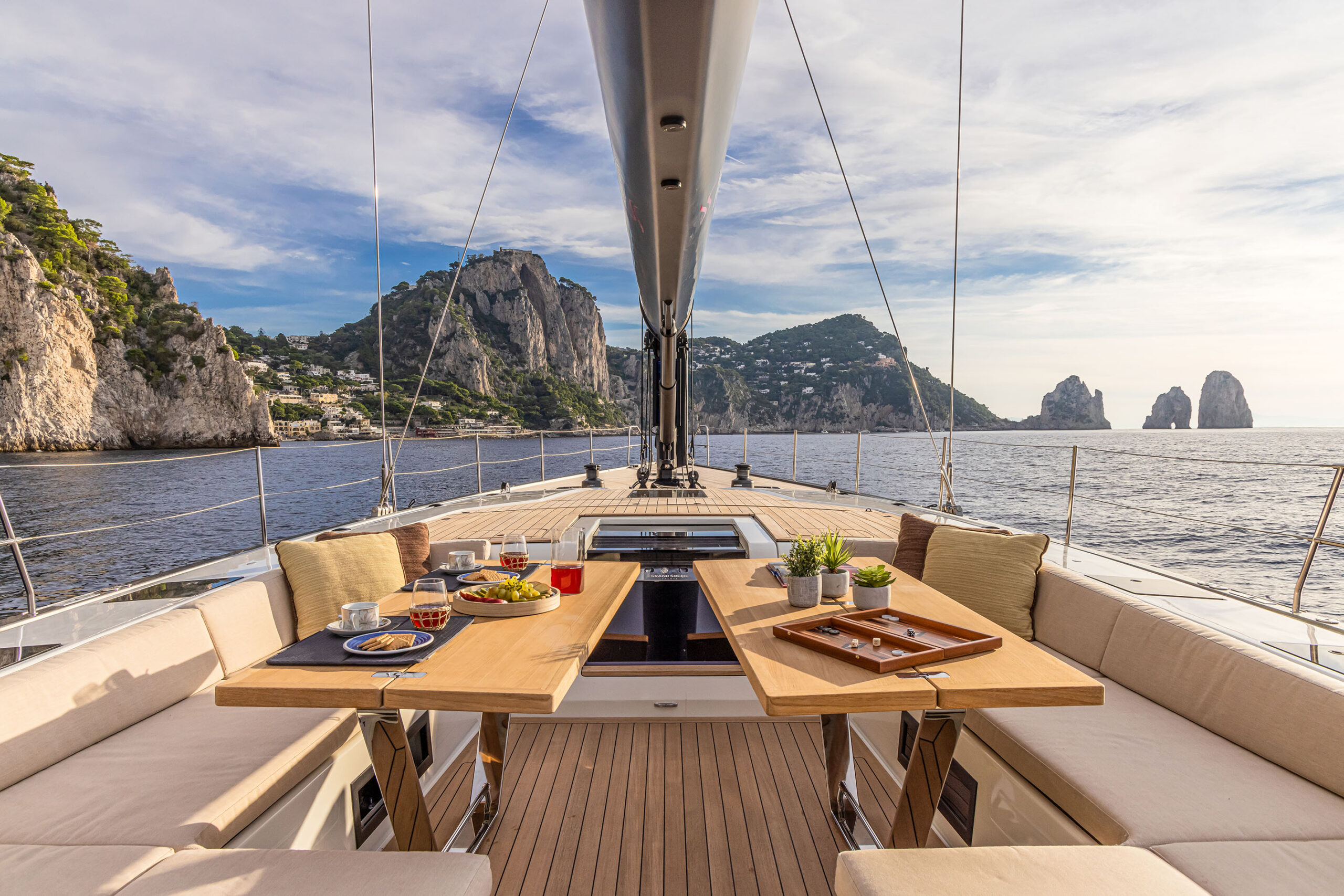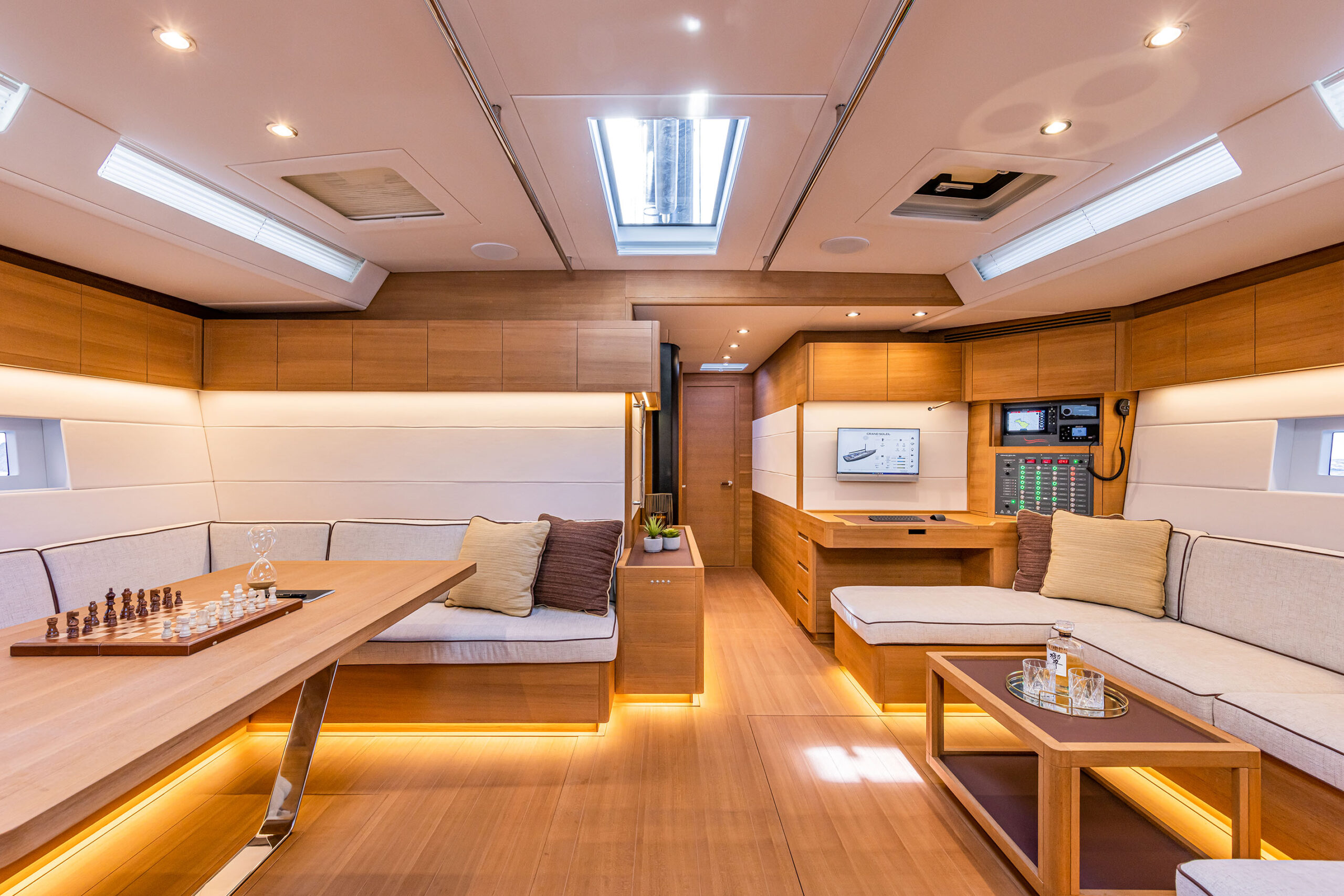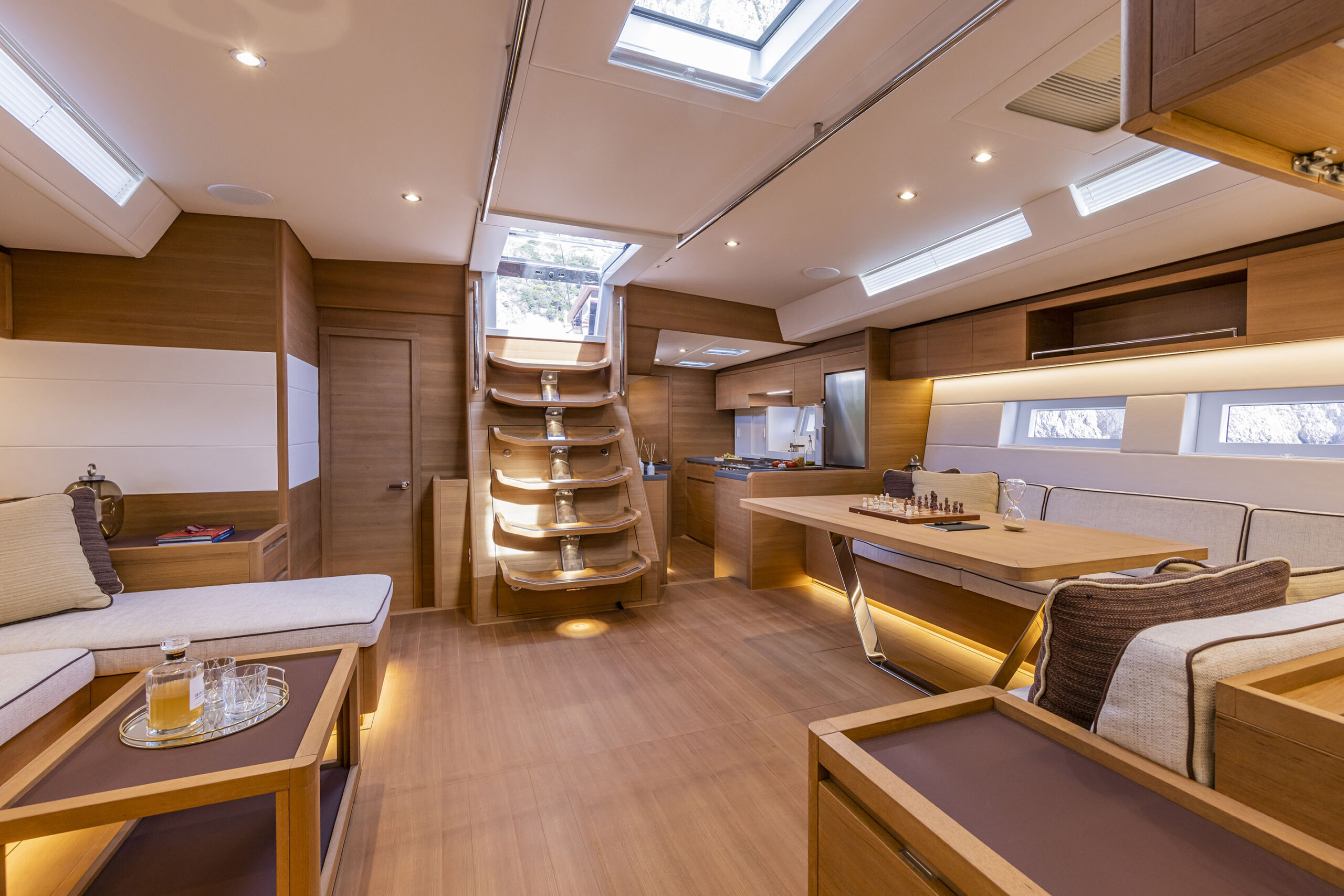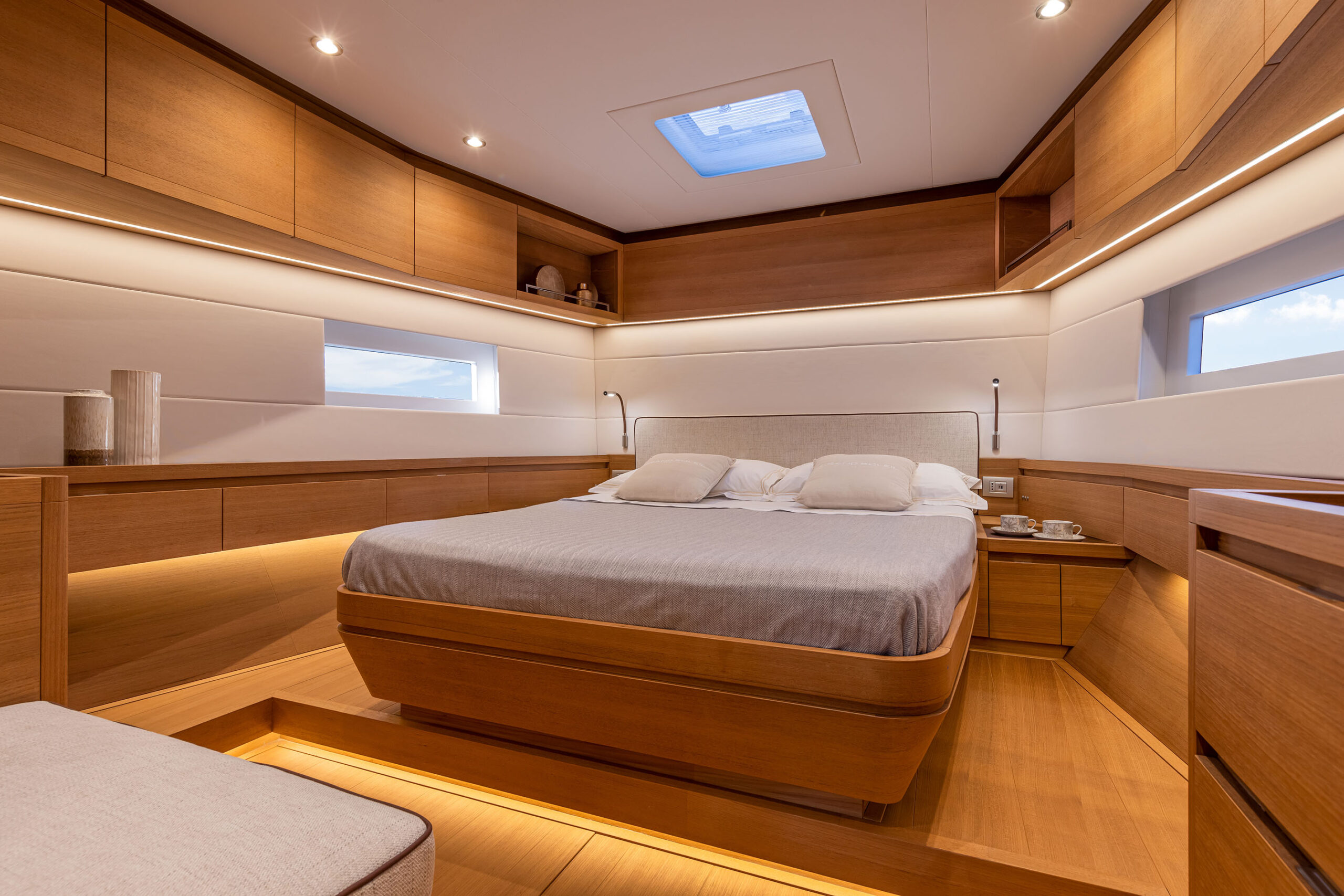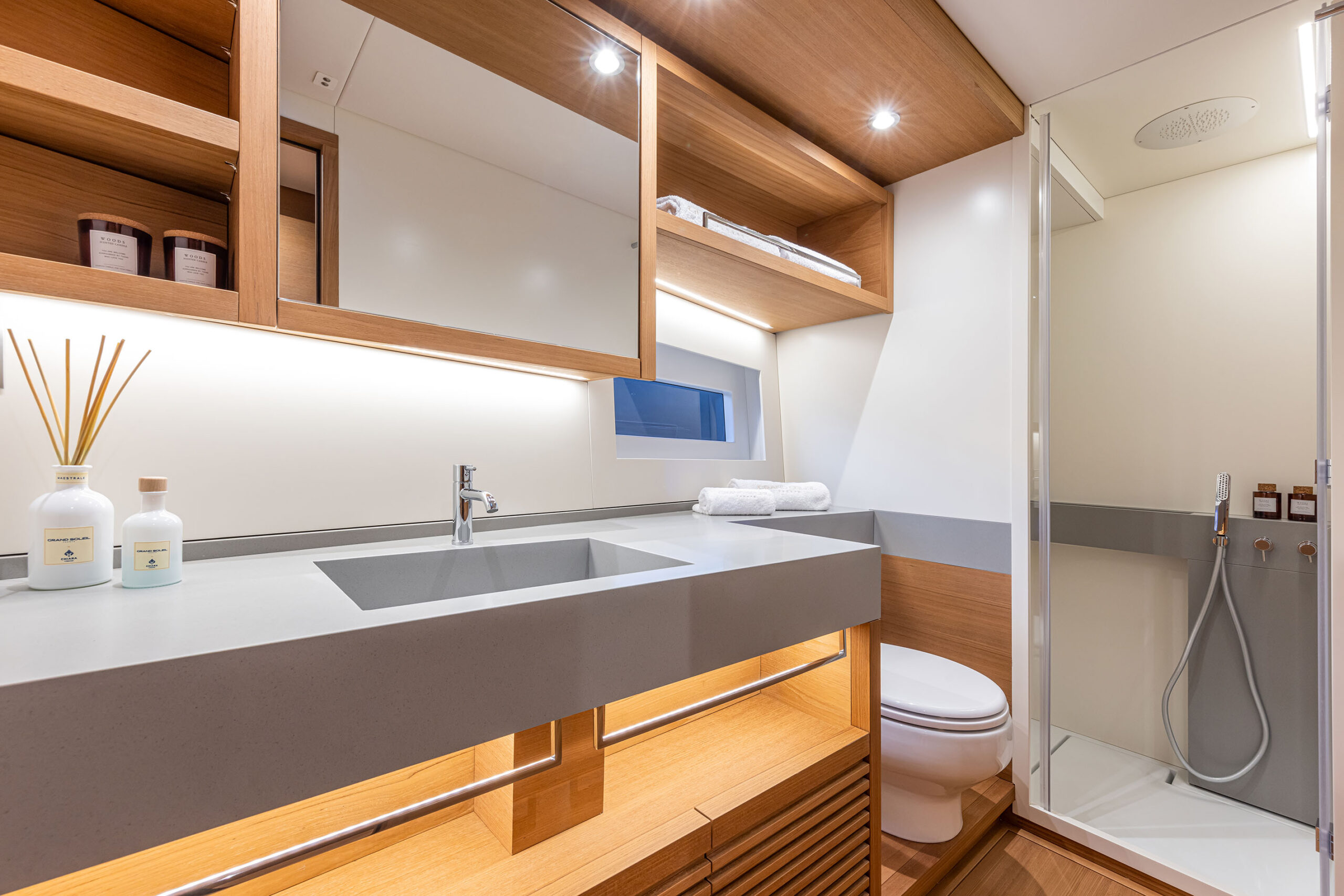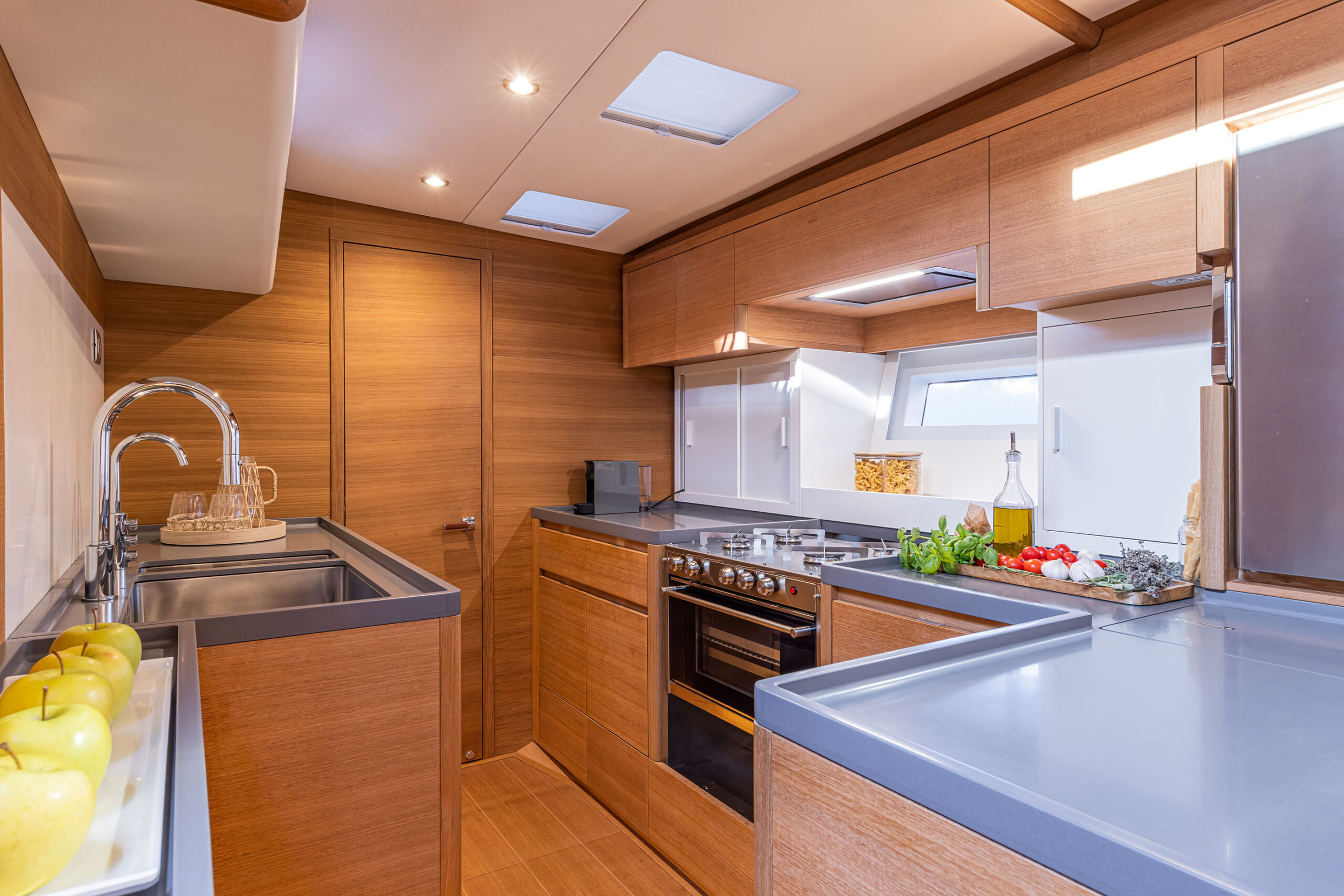Presentation
Yacht Class n°34 (sept-oct-nov 2023)
Cantiere del Pardo
The Grand Soleil 72 Performance marks the Italian shipyard Cantiere del Pardo’s entry into the 60+ feet segment. And it has done it with flying colours: she features refined lines, an efficient hull, an ergonomic deck layout as well as warm and well thought-out fittings. A review of a navigation on board a predicted success.
Written by Christophe Varène – Photos DR
A “grand soleil”… and a breeze! In the bay of La Spezia (Italy), the stage was set for the test of the latest Cantiere del Pardo, the Grand Soleil 72 Performance. This yacht marks the beginning of a new, more upmarket family designed to challenge the boundaries in terms of construction and care in the finishing even further. This first hull will soon be joined by the same model in a LC (Long Cruise) version and by a 65 LC, pending the Grand Soleil 80 currently under study. This transalpine shipyard, which is celebrating its fiftieth anniversary this year, has always been dynamic. For this sea trial, we were accompanied by Franco Corazza, an experienced racer with many successes in national and international competitions, but above all ‘the heart and soul’ of this project, according to Massimo Gino, co-founder of Nauta Design. He also guided us so that we didn’t miss out on any of the special features of this yacht with a decidedly elegant, streamlined look. The freeboard is quite limited, which, as we shall see later, has no impact on the interior volume; the discreet roof contributes to a refined silhouette (on the LC version, it will be 15 cm higher); the straight bow topped by a large bowsprit characterises this focus on performance; finally, the hull design, by the talented Matteo Polli, boasts rounded shapes, particularly towards the stern, which means minimal wetted surface while maintaining a spacious deck layout.
Sailing at over 10 knots
Leaving the port allowed us to appreciate the manoeuvrability of the Grand Soleil 72. Bernardo, the skipper, masters it, yet the thruster can be a great help especially when space is limited or wind gets in the way. With her powerful 150 hp Yanmar engine, the boat glides along at 8.8 knots at a speed of 2 200 rpm. But, as conditions were perfect, time had come to hoist the sails and enjoy the silence. Thanks to the aluminium furling boom and carbon mast, the mainsail was quickly set, soon to be joined by the self-tacking jib on a furler. These labour-saving operations are carried out from the control consoles. In a real wind of about a dozen knots, it’s easy to change tack: the feeling at the helm is very pleasant, with great precision and remarkable responsiveness, no doubt due to the size of the appendage (3.20 m). The boat tacked quickly and picked up well again, to reach between 9 and 10 knots at around 60 degrees to the true wind. The list was moderate and the helmsman had a perfect view all the way to the bow. On the way back to port, the angle was opened up and the jib was replaced by a Code 0: the Grand Soleil 72 glided steadily along at around 12 knots and easily managed a series of gybes. It was a conclusive sea trial in terms of behaviour and ability to cope with moderate conditions on the Mediterranean.
A fluid, user-friendly deck
And since performance is not incompatible with elegance, let’s focus on the deck layout. During our trip in the Bay of La Spezia, we were in a “racing” mode, which means that nothing hindered our movements – nor our vision – from stern to bow: the sprayhood was stowed in its housing, the tables of the outdoor lounge were folded away, and the upholstery was removed. The helmsman enjoys an inclined footrest to compensate for the heel and an ergonomic console that he or a crewmember can use without getting in each other’s way. The winches are well distributed in front of the console, for the headsails, and behind it for the mainsail. Perfectly suitable for regatta, this deck is also very passenger-friendly. The saloon is organised around two central tables. When open, they leave a small central passageway. The settees are wide enough to become sunbathing areas. The absence of a traveller track helps to keep the cockpit free and safe. The transom opens to form a swim platform and free up the tender garage. Let’s head inside. Taking the companionway provided the opportunity to assess the quality of the work: its six sloping steps and stainless steel centrepiece is per se an evidence of the shipyard’s expertise. The fittings, by Nauta Design, immediately strikes by the brightness they offer in the saloon – anywhere, there are plenty of windows offering a sea view – and by the sober, elegant and functional facilities, with predominant teak. The high headroom adds volume to the overall layout, but the handrails on the ceiling cannot be reached by small sizes. The concept of space is well thought out, with clearly identified zones for different activities. The starboard side accommodates a convivial saloon with U-shaped sofa and coffee table, near the chart table, which is a real navigation and is adjacent to the galley whose compact layout, practical in any situation, offers large worktops and a full range of equipment.
A very cosy master cabin
The master cabin is accessible via the gangway fitted with a cupboard, running forward. As we passed through, we discovered the cabin with two single beds and an independent head with a shower stall. The master is located towards the bow, with a large central double bed facing aft. Warm and bright, with plenty of storage space (wardrobe, drawers…), a sofa and a spacious shower room to the right of the passageway. Aft, there is a guest cabin on starboard, also fitted with two single beds and en suite, while the opposite side accommodates a crew cabin with bunk beds and a head. Before leaving the boat, Franco Corazza drew our attention to the construction processes used – foam core furniture for lightness, infused fibreglass hull, carbon reinforcements for rigidity and weight savings – but also to the semi-custom dimension of the Grand Soleil 72 Performance with, among other things, the telescopic keel and thrusters. With this large unit, Cantiere del Pardo gives itself the means to take its place in the sector of outstanding sailing yachts
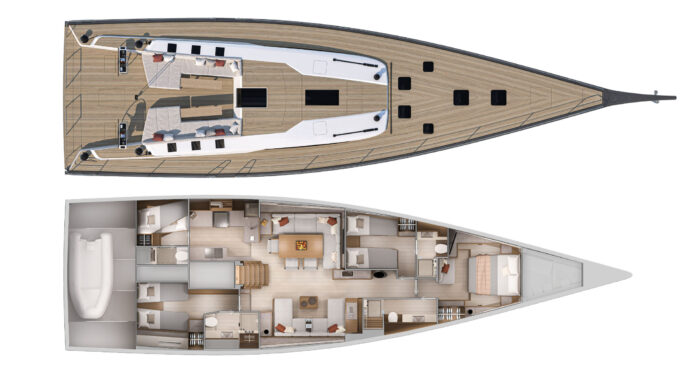
Technical sheet
